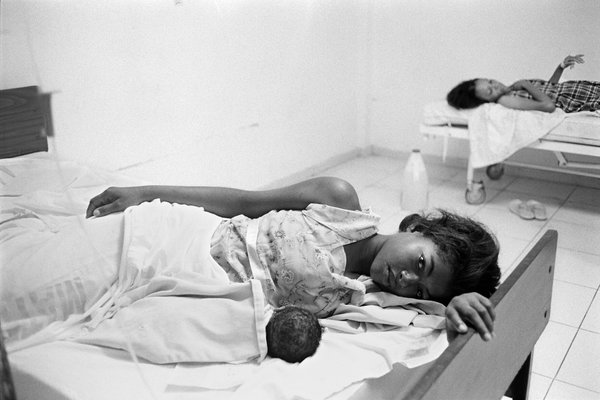
Life’s Unequal Beginnings
Alice Proujansky

A patient with her newborn baby in San Cristóbal, Dominican Republic. More Photos »
FOR the past six years I have been photographing birth, looking at its universal as well as cultural aspects, and the struggle to provide women with safe, respectful care. An estimated quarter of a million women die each year from pregnancy-related causes like pre-eclampsia. Though the number of women who die in pregnancy or childbirth is half what it was 20 years ago, most of these deaths could have been prevented.
My interest in the subject started when I was 18 and on a semester-abroad program in the Dominican Republic, where I ended up with a Spanish immersion internship in the maternity ward of a public hospital. I inserted catheters, waited alone with women laboring on bare plastic mattresses — family members were not admitted — and tried not to pass out while drawing blood. I’d had only a few years of high school Spanish, and I’d had no training for the work. Nine years later, I thought about those experiences with disbelief, and I was curious. So I returned to the hospital and began to photograph.
The maternity ward, which saw 600 deliveries per month, lacked hot water and dependable electricity in a country whose maternal mortality rate was among the highest in the Caribbean. Caesarean sections were very common. The doctors and nurses were brusque, and women who had induced abortions illegally and then come to the hospital for care were scolded until they cried before being sent to recover beside newborn babies.
Despite all of this, the female obstetrician I photographed was kind, hardworking and underpaid, doing what she felt was best.
In the following years, I photographed the birth process in many places — in Arizona, in a Navajo Nation-run hospital with a remarkably low rate of Caesarean sections; in a slum in Lagos, Nigeria, where midwives from Doctors Without Borders worked; in Mexico, where students from Mexico’s only government-accredited midwifery school studied with Mayan midwives; and in my hometown hospital in Greenfield, Mass., where all the patients see only midwives but have access to doctors in case of an emergency.
Women giving birth need trained attendants, sufficient medical supplies and respect. I was lucky to have all of that. Last June, I gave birth to my first child, a boy named William. I pulled his slippery body onto my soft belly and squinted at him through eyes that were puffy from hours of pushing. I held him, fed him, rested and ate. I was exhausted and a little stunned but safe, cared for, and alive.
